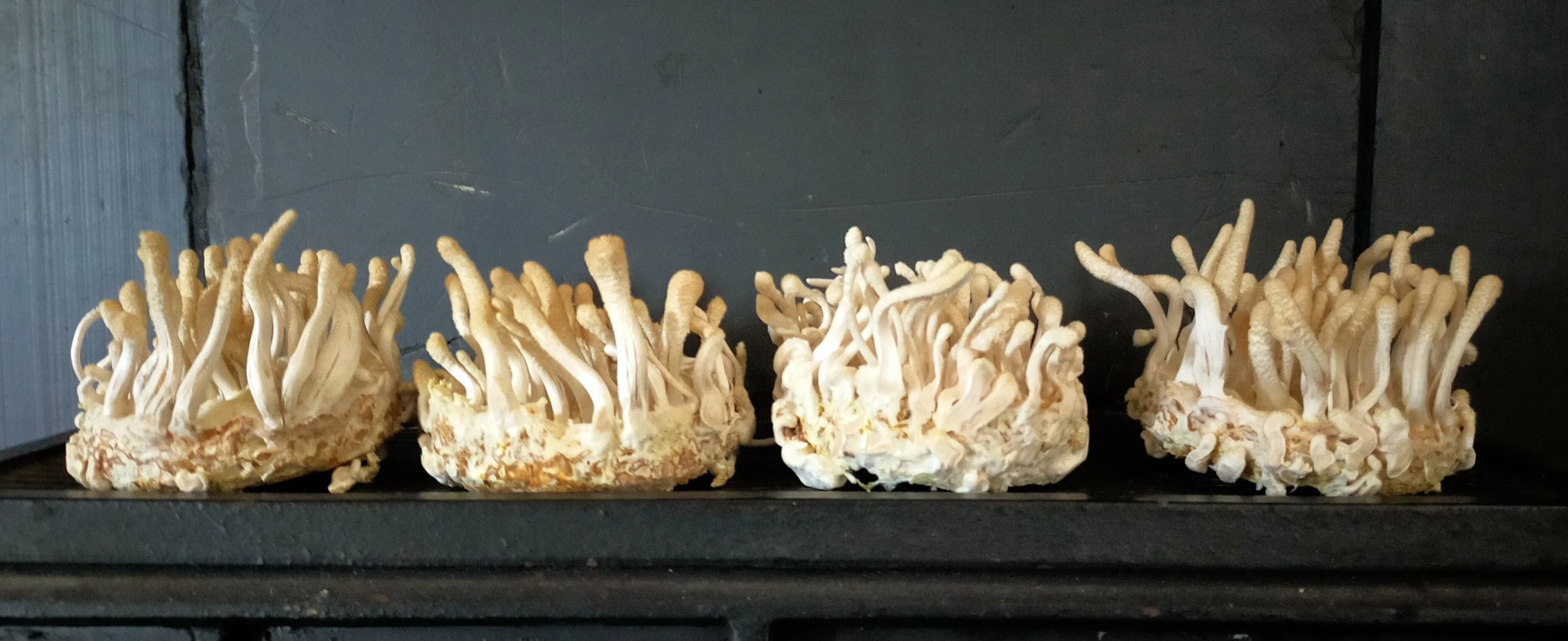Nutraceuticals are products derived from food sources that provide health benefits beyond basic Nutrition
Fungi such as mushrooms, are a rich source of various nutraceuticals, These include:
1. Polysaccharides
β-glucans: Found in the cell walls of fungi, these are known for immune-boosting properties.
Chitin: Provides dietary fiber benefits.
2. Proteins and Amino Acids
Mushrooms contain a high-quality protein with all essential amino acids.
Specific proteins, like lectins.
3. Vitamins
Vitamin D: Especially ergocalciferol (D2), when exposed to sunlight or UV light.
B-complex vitamins: Such as riboflavin (B2), niacin (B3), pantothenic acid (B5), and biotin (B7).
4. Minerals
Potassium: Supports heart and muscle function.
Selenium: Antioxidant properties.
Copper, Zinc, Iron, Phosphorus: Various roles in metabolic processes.
5. Phenolic Compounds
Antioxidants like gallic acid, catechins, and protocatechuic acid.
Known for anti-inflammatory and anti-aging effects.
6. Sterols and Triterpenoids
Ergosterol: A precursor to Vitamin D2.
Triterpenoids: Found in some fungi like Ganoderma (reishi),are of great interest (pubmed).
7. Lipids
Essential fatty acids, including linoleic acid, support cardiovascular health.
8. Enzymes
Such as laccase and peroxidases, which may have detoxifying properties.
9. Secondary Metabolites
Alkaloids: Some have potential therapeutic effects.
Terpenes: Found in medicinal fungi like Cordyceps and Ganoderma, with anti-inflammatory and adaptogenic benefits.
10. Dietary Fiber
Supports gut health and may reduce cholesterol levels.
Examples of Functional Fungi and Their Neutraceuticals:
Reishi (Ganoderma lucidum): Triterpenoids, polysaccharides, and sterols.
Shiitake (Lentinula edodes): Lentinan (immune-boosting polysaccharide).
Lion's Mane (Hericium erinaceus): Erinacines and hericenones for nerve regeneration.
Cordyceps: Cordycepin for energy and stamina.
These compounds collectively may contribute to fungi's potential to support immune function, reduce inflammation, improve gut health, and provide antioxidant protection.
Please use pubmed to research
Recent research on fungi and ergothioneine highlights the compound’s remarkable potential in human health, its biological origins, and its agricultural implications.
1. What is Ergothioneine?
Ergothioneine is a sulfur-containing amino acid first discovered in fungi. It is an exceptional antioxidant that accumulates in key tissues like the liver, kidneys, and brain, protecting against oxidative stress and inflammation. It plays a crucial role in detoxifying harmful substances and may slow the aging process
2. Fungi as a Source of Ergothioneine:
Mushrooms are a primary dietary source of ergothioneine, particularly species such as Shiitake, Reishi, Lion’s Mane, and Oyster mushrooms. Mycorrhizal fungi in soil also contribute to ergothioneine levels in crops through symbiotic relationships with plants. Practices promoting healthy fungal populations in soil (like no-till farming) can boost ergothioneine levels in grains and vegetables.
3. Possible Health Benefits:
Ergothioneine ( Google and pubmed )
4. Challenges in Agriculture and Diet:
Conventional agricultural practices, such as tillage and the use of chemical fertilizers, harm soil fungi, reducing ergothioneine levels in crops. Sustainable farming methods that encourage fungal health are critical for preserving this nutrient’s presence in food systems.
Cordyceps militaris, renowned for its diverse bioactive compounds and their potential health benefits. Here’s an in-depth look at its primary beneficial compounds:
1. Cordycepin (3’-deoxyadenosine)
Description: A nucleoside analog unique to Cordyceps species, cordycepin is a standout bioactive compound.
Possible Health Benefits: refer pubmed
2. Polysaccharides
Description: Complex carbohydrates with potent biological activity.
Possible Health Benefits: refer pubmed
3. Adenosine
Description: A purine nucleoside with wide-ranging physiological effects.
Possible Health Benefits: refer pubmed
4. Ergosterol (Provitamin D2)
Description: A sterol compound that converts to vitamin D2 upon UV exposure.
Possible Health Benefits: refer pubmed
5. Beta-Glucans
Description: A type of polysaccharide known for immune-enhancing properties.
Possible Health Benefits: refer pubmed
6. Superoxide Dismutase (SOD)
Description: An enzyme with potent antioxidant activity.
Possible Health Benefits: refer pubmed
7. Vitamins and Minerals
Description: Contains essential micronutrients, including B-vitamins, zinc, selenium, and potassium.
possible Health Benefits: refer pubmed
8. Proteins and Peptides
Description: Small peptides and proteins with bioactive properties.
Possible Health Benefits: refer pubmed
9. Other Bioactive Compounds
Nucleosides:
Phenolic Compounds:
Flavonoids: .


